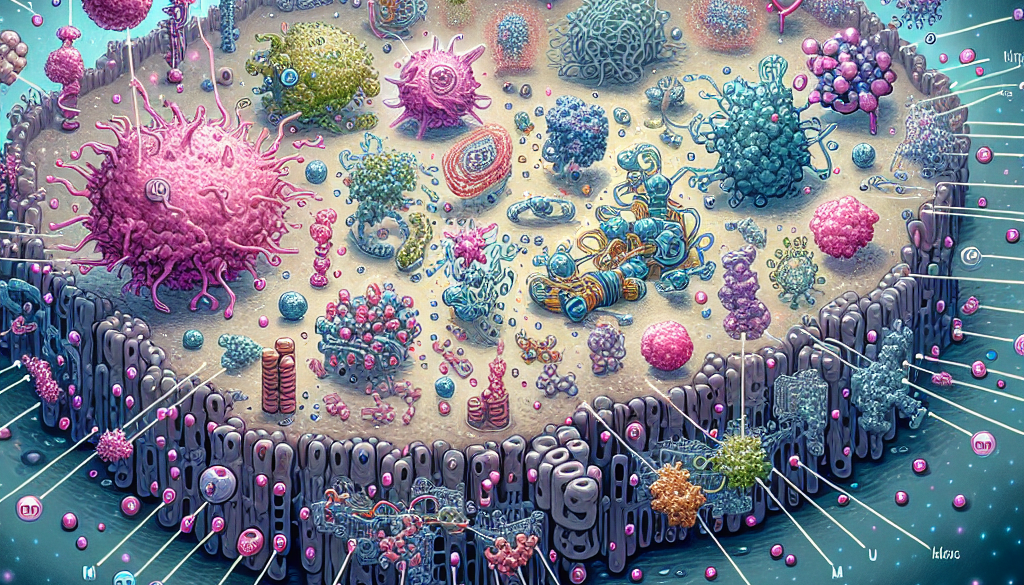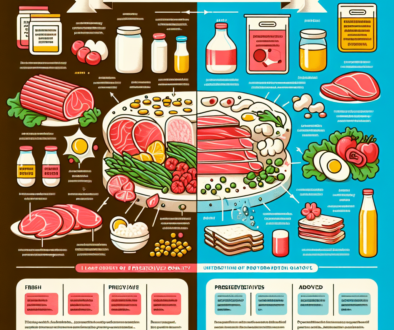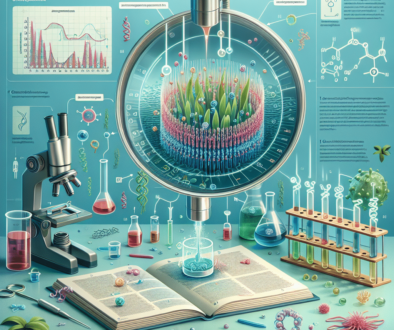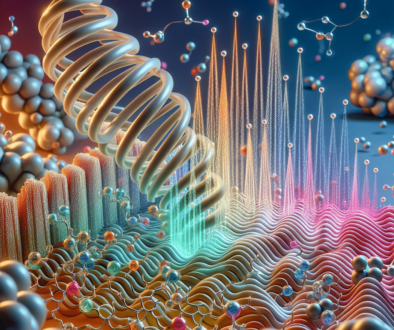Protein-Protein Interactions: Networking for Cellular Function
-
Table of Contents
- Protein-Protein Interactions: Pivotal to Cellular Function and Health
- The Importance of Protein-Protein Interactions
- Characterizing Protein-Protein Interactions
- Examples of Protein-Protein Interactions in Cellular Processes
- Case Studies: PPIs in Disease and Therapy
- Statistics and Trends in Protein-Protein Interaction Research
- Conclusion: The Future of Protein-Protein Interaction Studies
- Discover High-Quality Proteins with ETprotein
Protein-Protein Interactions: Pivotal to Cellular Function and Health

Proteins are the workhorses of the cell, performing a vast array of functions necessary for life. They are not solitary players; rather, they act in a highly coordinated and regulated manner through protein-protein interactions (PPIs). These interactions are fundamental to virtually every process in a living organism, from DNA replication and signal transduction to immune responses and metabolic control. Understanding PPIs is crucial for deciphering the molecular basis of diseases and for the development of new therapeutic strategies.
The Importance of Protein-Protein Interactions
Protein-protein interactions are at the heart of the cellular interaction network and are critical for biological processes. They allow proteins to form complexes, which can be more efficient in their functions than individual proteins acting alone. PPIs are involved in:
- Regulating gene expression
- Mediating signal transduction pathways
- Forming structural components of the cell
- Facilitating transport and communication between cells
- Executing metabolic pathways
- Directing protein synthesis and degradation
Given their central role in cellular function, it’s not surprising that aberrant PPIs are associated with a range of diseases, including cancer, neurodegenerative disorders, and infectious diseases.
Characterizing Protein-Protein Interactions
Understanding the specifics of PPIs is a major focus of research in molecular biology. Techniques such as co-immunoprecipitation, yeast two-hybrid screening, and more recently, mass spectrometry-based methods, have been instrumental in identifying and characterizing PPIs. Additionally, computational approaches like molecular docking and network analysis are increasingly used to predict PPIs and understand their biological context.
Examples of Protein-Protein Interactions in Cellular Processes
Several key cellular processes are driven by protein-protein interactions, each illustrating the complexity and elegance of cellular machinery:
- Signal Transduction: The binding of a ligand to a receptor protein often triggers a cascade of PPIs, leading to a cellular response. For example, the interaction between G-protein-coupled receptors and various G-proteins is essential for transmitting signals from the cell surface to its interior.
- Immune Response: The immune system relies on PPIs to detect and respond to pathogens. T-cell receptors interact with peptide-MHC complexes to initiate an immune response, while antibodies bind to antigens through specific PPIs.
- Cell Cycle Control: The cell cycle is regulated by the interactions between cyclins and cyclin-dependent kinases, ensuring that cells replicate their DNA and divide at the appropriate time.
Case Studies: PPIs in Disease and Therapy
Research into PPIs has provided insights into the molecular basis of diseases and has opened up new avenues for therapeutic intervention:
- Cancer: The interaction between the tumor suppressor protein p53 and the oncogene MDM2 is a well-studied PPI. In many cancers, this interaction is disrupted, leading to uncontrolled cell growth. Small molecules that can disrupt the p53-MDM2 interaction are being explored as potential cancer therapies.
- Alzheimer’s Disease: The aggregation of tau proteins, through aberrant PPIs, leads to the formation of neurofibrillary tangles, a hallmark of Alzheimer’s disease. Understanding these interactions is crucial for developing drugs that can prevent tau aggregation.
- HIV: The virus relies on PPIs with host cell proteins to replicate. Drugs that inhibit these interactions, such as protease inhibitors, are a mainstay of HIV treatment.
Statistics and Trends in Protein-Protein Interaction Research
The field of PPI research is rapidly growing, with thousands of interactions being added to databases like the Protein Interaction Network Analysis (PINA) platform annually. The global market for PPIs studies is expected to expand significantly, driven by the need for new therapeutic targets and the advancement of technologies for studying PPIs.
Conclusion: The Future of Protein-Protein Interaction Studies
Protein-protein interactions are fundamental to the functioning of cells and organisms. As research techniques become more sophisticated, our understanding of PPIs continues to deepen, revealing their vast potential for therapeutic intervention. The future of PPI research holds promise for the development of novel drugs and treatments, particularly as we begin to unravel the complex networks of interactions that govern cellular function and disease.
Discover High-Quality Proteins with ETprotein
If you’re involved in research or product development that requires high-quality protein sources, ETprotein offers a range of superior protein products. Their commitment to non-GMO, allergen-free, and organic proteins ensures that you have access to the best ingredients for your work in nutraceuticals, pharmaceuticals, food and beverage, and more.
ETprotein’s expertise in protein manufacturing and supply is trusted by leading global brands and Fortune 500 companies. Whether you need rice protein, pea protein, or any other plant-based protein, ETprotein can provide you with the right solution tailored to your specific needs.
For more information or to sample their products, reach out to ETprotein and take the first step towards enhancing your protein-related projects.
About ETprotein:
ETprotein, a reputable protein Chinese factory manufacturer and supplier, is renowned for producing, stocking, exporting, and delivering the highest quality organic bulk vegan protein and plant proteins. They include Organic rice protein, clear rice protein, pea protein, clear pea protein, pumpkin seed protein, sunflower seed protein, mung bean protein, peanut protein etc. Their offerings, characterized by a neutral taste, non-GMO, allergen-free attributes, cater to a diverse range of industries. They serve nutraceutical, pharmaceutical, cosmeceutical, veterinary, as well as food and beverage finished product distributors, traders, and manufacturers across Europe, USA, Canada, Australia, Thailand, Japan, Korea, Brazil, and Chile, among others.
ETprotein specialization includes exporting and delivering tailor-made protein powder and finished nutritional supplements. Their extensive product range covers sectors like Food and Beverage, Sports Nutrition, Weight Management, Dietary Supplements, Health and Wellness Products, and Infant Formula, ensuring comprehensive solutions to meet all your protein needs.
As a trusted company by leading global food and beverage brands and Fortune 500 companies, ETprotein reinforces China’s reputation in the global arena. For more information or to sample their products, please contact them and email sales(at)ETprotein.com today.














